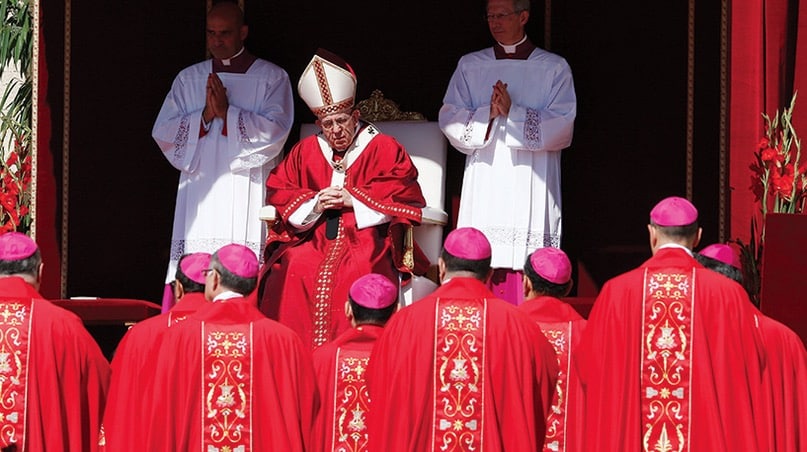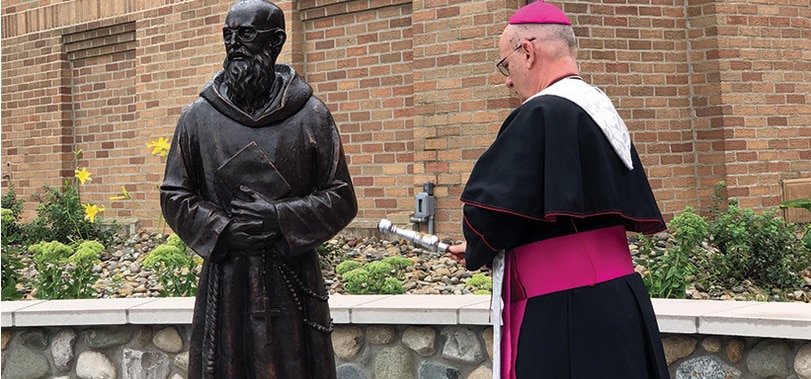In 1859 Father — later Cardinal — John Henry Newman published a long essay, which he called “On Consulting the Faithful in Matters of Doctrine.” Although controversial when it first appeared, it is still mined today for its insights. Now, however, the Church may need a different study, with a title like “On Consulting the Faithful on the Selection and Promotion of Bishops.” And the scandal surrounding Archbishop Theodore McCarrick suggests it can’t come too soon.
Following the accusations against McCarrick of sexual misconduct with boys and young men, including seminarians and priests, Pope Francis accepted his resignation from the College of Cardinals and removed him from ministry pending a Church trial. Many welcome this but believe it isn’t enough. Beyond digging out the facts of this scandal, reforms are needed to reduce the chances of something like it happening again and to rebuild trust in the hierarchy.
Necessary as that is, others say, the reforms should include major changes in the way men become bishops and are promoted within the ranks of the hierarchy. One such change would be to give laypeople a much larger role in the vetting process than they have now.
Current system
Involving laypeople wouldn’t by itself prevent something like the McCarrick scandal from happening. But it would reduce the influence of the system that kept the former cardinal moving up in the ranks of the hierarchy even though his misdeeds were rumored.
As it stands, the vetting process for men being considered for appointment or promotion as bishops already allows for limited, confidential consultation of the laity. Canon 377 of the Code of Canon Law says that “if he deems it expedient” the nuncio or papal legate in the country may seek the views of laypeople “outstanding for their wisdom” concerning particular candidates.
But the canon specifies that this is to be done “individually and in secret,” a practice that has been employed at various times. Such consultation could be made mandatory and involve new lay consultative bodies established for this purpose, as well as a more forthcoming vision of consulting the laity that sees it as not just consultation “of” laypeople but collegial consultation with them.
Messy precedents
The ways in which bishops are chosen have varied greatly over the centuries. Indeed, until early in the last century, rulers of Catholic countries claimed and sometimes exercised a right to intervene even in papal elections. As that suggests, not every suggested change in the way bishops are chosen is necessarily desirable. But there are plenty of precedents — both good and bad — for involving laypeople.
In the early centuries of the Church, the preferred approach was participation by all the members of the local church — including the laity — in selecting their bishop. St. Cyprian, a third-century bishop of Carthage, wrote that there was “divine authority” for having candidates evaluated by “public scrutiny and testimony” and “chosen in the presence of the laity and before the eyes of all.”
| Role in Investigation and Review |
|---|
|
As bishops have wrangled with how to respond to the McCarrick case, some have floated the idea of a review board to investigate and respond to allegations against bishops. In an Aug. 6 statement, Bishop Edward B. Scharfenberger of Albany, New York, asserted that lay participation in such a body would be essential: “I think we have reached a point where bishops alone investigating bishops is not the answer. To have credibility, a panel would have to be separated from any source of power whose trustworthiness might potentially be compromised. … What is needed now is an independent commission led by well-respected, faithful lay leaders who are beyond reproach, people whose role on such a panel will not serve to benefit them financially, politically or personally. These will be people with a deep understanding of the Catholic faith, but without an axe to grind or an agenda to push. It will not be easy, but it will be worth every ounce of effort, energy, and candor we can muster. … We need an investigation — the scope of which is not yet defined but must be defined — and it must be timely, transparent and credible.” |
Hippolytus, another third-century writer, similarly wrote, “Let the bishop be ordained after he has been chosen by all the people. … While all give their consent, [other] bishops shall lay hands upon him.”
As time passed, the involvement of the laity came to be restricted to lay people who were particularly powerful or influential. Increasingly, too, the selection of bishops became the prerogative of the clergy alone.
The 12th and 13th centuries saw the pope more and more intervening in the process, and in 1363 Pope Urban V claimed papal authority to appoint all patriarchs, archbishops, bishops, abbots and abbesses.
In the early Middle Ages, lay lords often selected bishops and holders of other ecclesiastical posts and bestowed the symbols of their office on them. In the 11th century, Pope Gregory VII and the German emperor Henry IV battled fiercely over the practice, with Gregory excommunicating the emperor and the emperor convening a council to depose the pope.
The Council of Trent discussed the selection of bishops at length but did not reach consensus, with opinions ranging from election by the laity and clergy of the diocese to appointment by the pope. In the end, it simply provided directives for situations where papal appointment was the practice.
More cooperation
In the United States, the controversy over lay trusteeism in the 19th century was the closest the Church here has come to a major clash over such matters. Under trusteeism, laymen in New York, Philadelphia and other places bought land, built churches, incorporated parishes, and appointed pastors of their own choosing. The bishops fought back, and the struggle dragged on for years, with the fallout helping put an official damper on other forms of lay initiative until well into the 20th century.
The Second Vatican Council did not directly address involving the laity in the choice of bishops, but it seemed to offer some indirect encouragement to the idea. Lumen Gentium, the Dogmatic Constitution on the Church, says that along with other ways of participating in the Church’s mission, the laity “can also be called in various ways to a more direct form of cooperation in the apostolate of the hierarchy” (No. 33).
The constitution doesn’t say what those “different ways” might be. But a little later it does say competent laypeople are “permitted and sometimes even obliged to express their opinion” on Church affairs through institutions “erected by the Church for that purpose” (No. 37).
Back in 1859, John Henry Newman concluded his essay by saying the Church is “more happy” when its lay members are informed and involved than when they are kept in the dark, “which in the educated classes will terminate in indifference and in the poorer in superstition.”
Change a few words in that, and you have a good argument for consulting the laity when choosing bishops.
Russell Shaw is an Our Sunday Visitor contributing editor.







